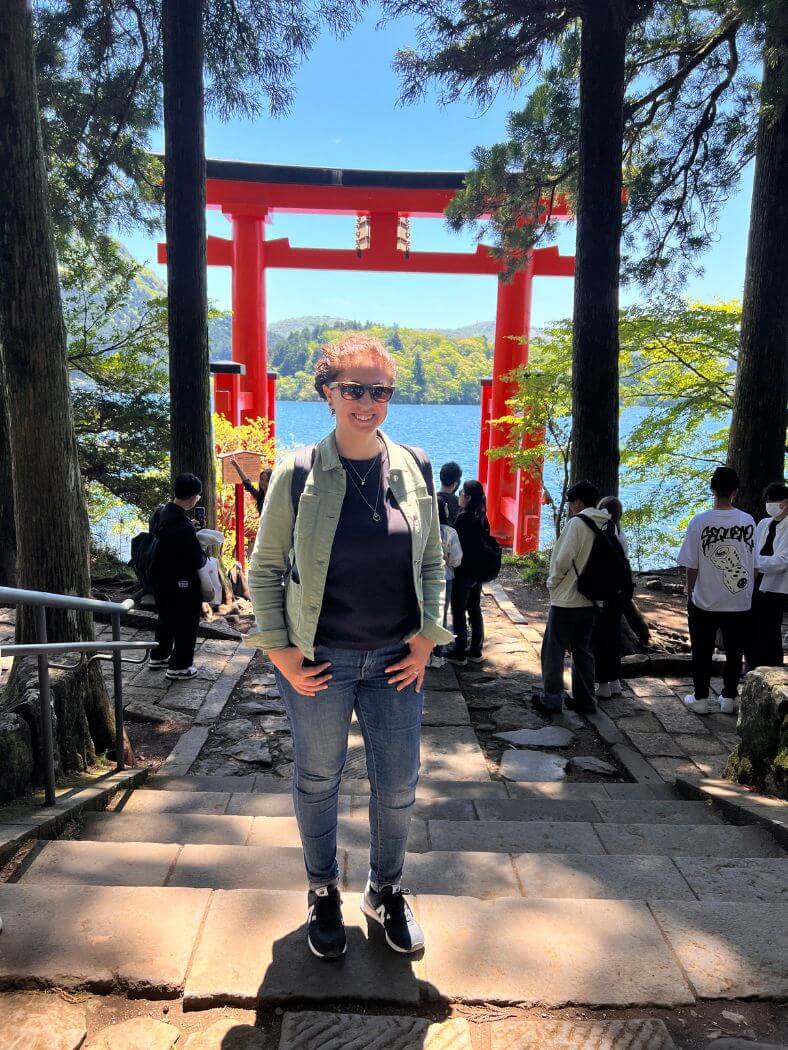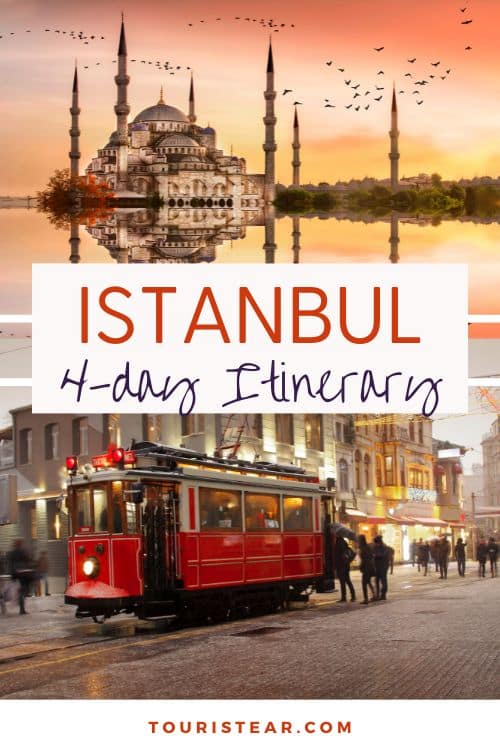Visit Topkapi Palace: A Historical Adventure in Istanbul
If you’re planning a trip to Istanbul, you can’t miss the opportunity to visit Topkapi Palace. This historic site is one of the city’s main tourist attractions and is considered one of the most impressive palaces in the world.
Topkapi Palace was the residence of the Ottoman sultans for more than 400 years. Today, the palace is a museum housing an impressive collection of historical artifacts, including jewelry, weapons, textiles, and everyday items.
Here you have to explore the palace gardens, courtyards, and interior rooms, including the Treasury, the Harem, and the Imperial Council Chamber.
If you want to visit the Topkapi Palace, we recommend planning your visit in advance. The palace receives a large number of visitors year-round and can be very crowded during the high season.
Buying your tickets online and arriving early in the morning is advisable to avoid the crowds. With a little planning, your visit to Topkapi Palace will be an unforgettable experience.
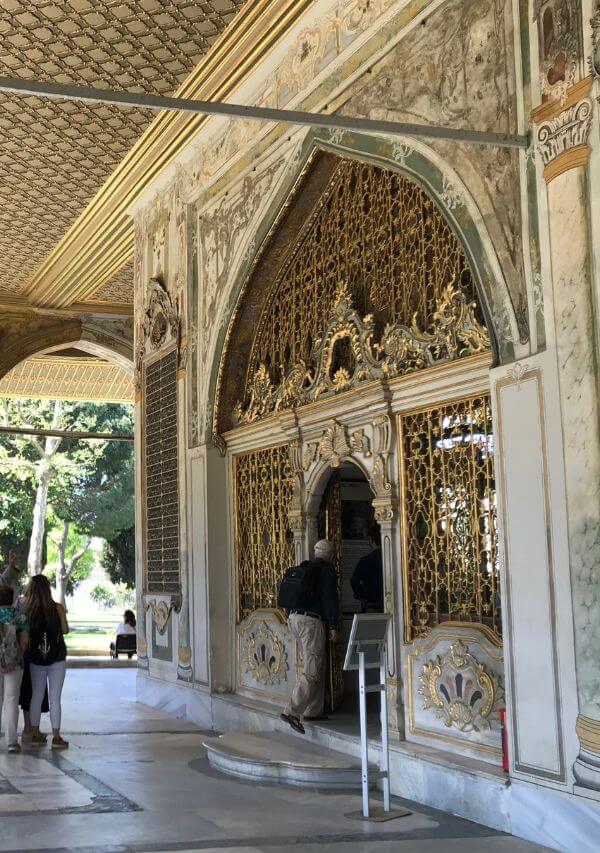
Topkapi Palace History
Topkapi Palace is one of Istanbul’s most iconic monuments, and a must-see for anyone visiting the city.
The palace was the administrative center of the Ottoman Empire from 1465 to 1853 and is considered one of the largest surviving palaces in the world.
The construction of the Topkapi Palace was ordered by Sultan Mehmed II in 1459 and was completed in 1465.
The Ottoman Sultan Mehmed the Conqueror was in search of a new residence befitting his status after the conquest of Constantinople in 1453, and he decided to build the Topkapi Palace on one of the hills of Istanbul.
According to Wikipedia, the palace, along with its courtyards and gardens, covers an area of approximately 700,000 square meters and houses an impressive collection of artifacts and treasures from the Ottoman era.
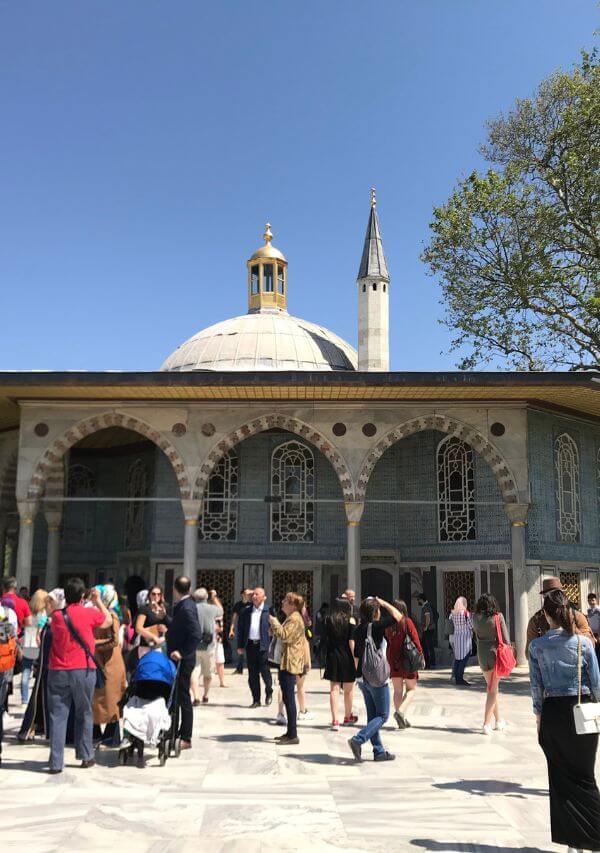
Topkapi Palace was the home of the Ottoman sultans for almost four centuries and was also the administrative and educational headquarters of the state.
The palace features numerous halls and rooms, including the Harem, where the sultan’s wives and concubines lived, and the Council Chamber, where the most important decisions of the Ottoman Empire were made.
This palace reflects the grandeur and opulence of the Ottoman Empire. If you visit Istanbul, you can explore the palace on your own by purchasing tickets online and booking a free tour to have everything explained in more detail on-site. (the free tour is not mandatory but recommended).
How to Get to Topkapi Palace
If you are planning to visit the Topkapi Palace in Istanbul, you have several options to get there. The easiest and most convenient way is by tram. The nearest tram station is Gülhane istasyonu, which is less than a 10-minute walk from the palace.
If you prefer to go by car, please note that no parking is available at the palace. You will have to park in a nearby paid parking lot. You can also arrive by cab or public transportation such as bus or subway, but the tram is the most recommended option.
If you are coming from the airport, you can take the metro to Zeytinburnu station and then transfer to the tram heading towards Kabatas. Get off at Gülhane station and walk to the palace.
Another option is to take a boat across the Bosphorus and get off at the Eminönü stop. From there, you can walk to the palace or take the tram toward Zeytinburnu and get off at Gülhane station.
Depending on where you’re staying, you can also reach the palace by walking and enjoying a morning stroll through Istanbul.
In short, the best way to reach the Topkapi Palace is by tram, as it is comfortable, easy, and inexpensive. In addition, you can enjoy the views of the city during the ride.
How To Visit the Topkapi Palace
Visiting the Topkapi Palace is a unique and unforgettable experience, but it is important that you plan your visit well to make the most of the time you spend there.
In this section, we explain everything you need to know to visit the Topkapi Palace without missing anything important.
Topkapi Palace Tickets and Box Office
First, you should know that Topkapi Palace is open every day except Tuesdays. Opening hours are at 9:00 a.m., and closing hours are at 5:00 p.m.
The entrance fee to the Topkapi Palace is 25€, which includes an audio guide that you can collect at the ticket counters. However, they will ask for your identification document (ID card or passport) as a deposit.
To avoid queues at the box office, we recommend that you buy your tickets online. The only queue you won’t get out of is the security checkpoint. That’s why we recommend going early, so the queue is shorter.
Look at the queue to enter the Palace. This is the one for purchasing tickets.
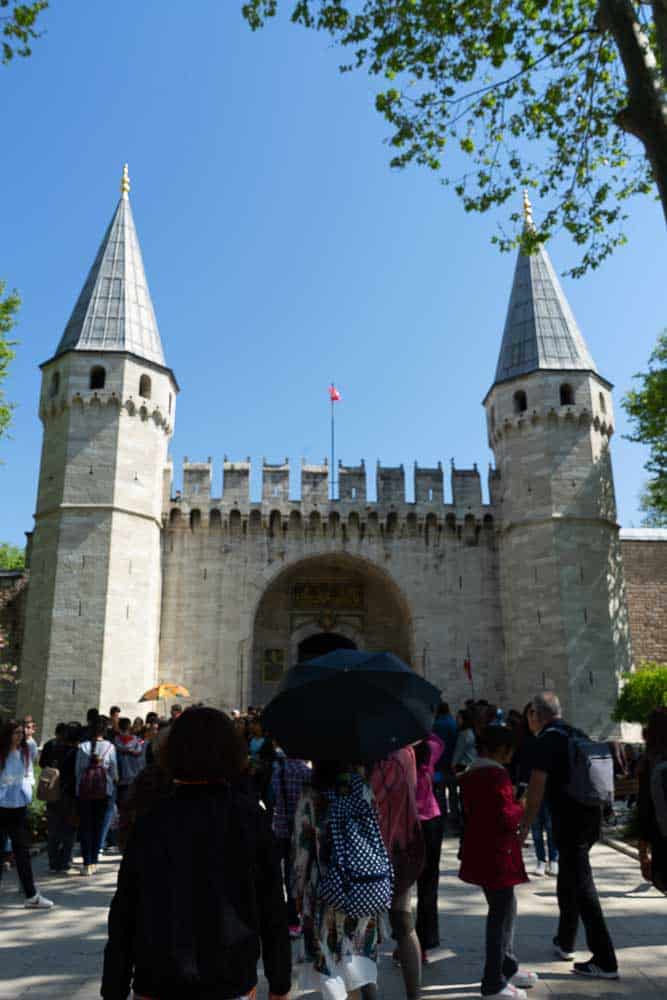
*Note: Prices may change over time, so we recommend checking them on the site’s website or when you go to book your activities in Istanbul. If you haven’t gotten a ticket, ensure you have an internet sim to purchase while traveling in Turkey.
What to See in Topkapi Palace
Here are some of the highlights not to be missed during your visit.
Palace Areas
The Topkapi Palace is divided into three areas: the third courtyard, the second courtyard, and the first courtyard.
In the third courtyard are the pavilions of the sultans, the library, and the treasury. The kitchens, audience rooms, and princes’ quarters are in the second courtyard. In the first courtyard, you will find the stables, the armory, and the workshops.
It is important that you plan your visit well so as not to miss anything important. We recommend starting in the third courtyard and working your way up to the first courtyard.
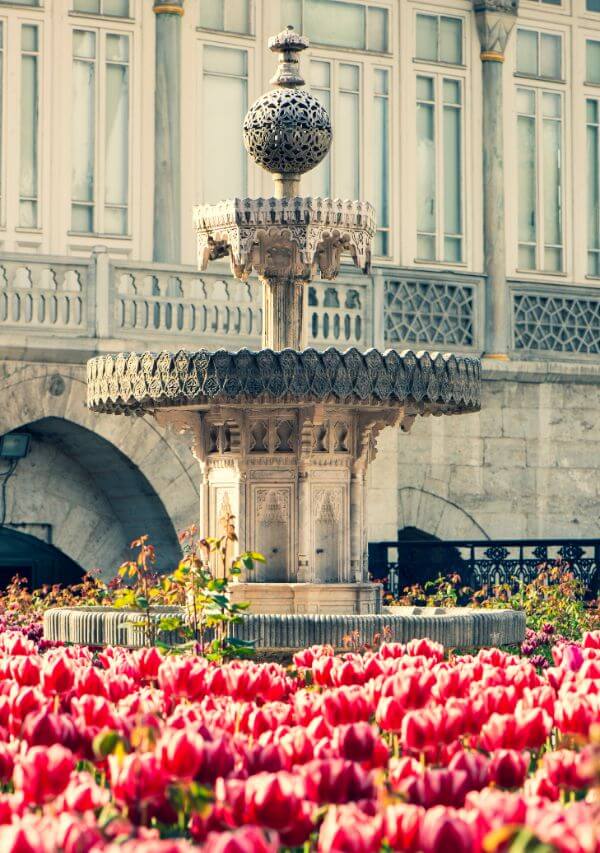
First Patio
The first courtyard, or outer courtyard of the Topkapi Palace in Istanbul, has a magnificent tree-lined garden and is entered through the Bab-i Humayun (Imperial Gate) gate.
The monumental fountain in front of the imperial gate is one of the finest examples of 17 th century Turkish art. Surrounding the first courtyard were the bakery, the Mint, the wood storage facilities, as well as the residences of bakers and carpenters, and the guardhouse.
Further down the esplanade were the palace orchards. The first building we will see in the first courtyard is the Tile Pavilion, and to the left, you can see the entrance to the Church of Hagia Irene, a Byzantine construction from the 6th century.
You will find the Topkapi Palace Museum in the second courtyard, entered through the Bab-üs Selam gate (Gate of Salutation).
Once you pass this gate, you have to cross the second gate called Orta Kapi (Middle Gate), which leads to the second courtyard where the administrative department of the state is located.
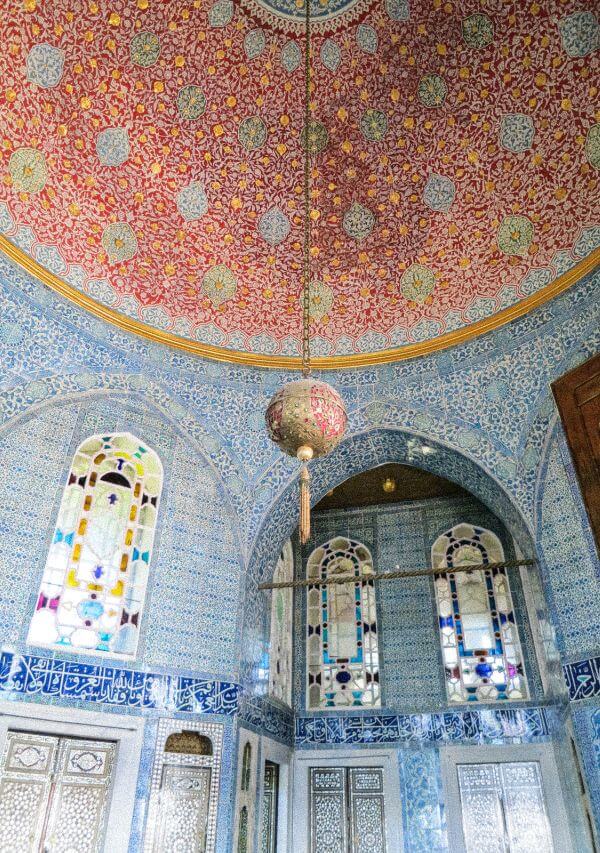
In this courtyard, only the Sultan could ride a horse. Here, you could see people who needed to resolve official matters and the Janissaries. Foreign ambassadors were received in this courtyard, and various ceremonies took place that could gather up to 10,000 people.
It is said that despite the large number of people that could gather, absolute silence reigned.
To the right of the second courtyard are the palace kitchens, which currently house galleries exhibiting the imperial collection of glass, silver, and Chinese porcelain.
When the kitchens were operational, over 1,000 people were working!
To access the third courtyard, you have to pass through the Bab-üs Saade gate (Gate of Felicity). No one could cross it without special permission. Under the control of the white eunuchs, one could enter this courtyard reserved for the Sultan.
In the third courtyard, you will find:
- The Imperial Center of Higher Education
- The Throne Room
- The Sultan’s Private Treasury contains the richest collection in the world.
- The rooms of the sacred relics
In the fourth courtyard, you will find the garden pavilions, including the Baghdad Pavilion, the only wooden building in the palace, richly decorated with ornaments and tiles dating back to the 17th century.
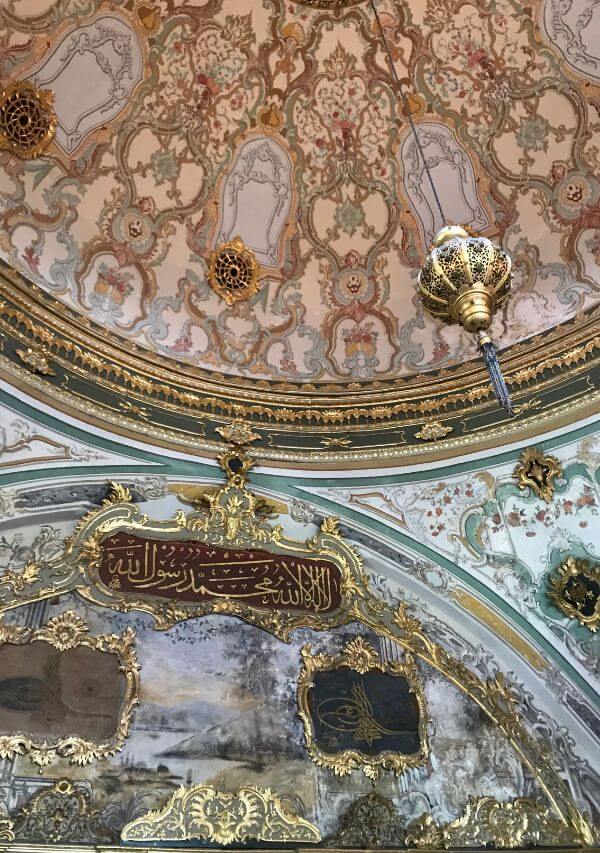
The Harem of Topkapi Palace
The Harem of Topkapi Palace is one of the most visited places. This space served as the private refuge of the Ottoman sultan and his extended family in Topkapi Palace.
The Harem is located in a separate area, right next to the third courtyard. It comprises around 400 rooms arranged around small secluded courtyards and long, narrow corridors.
The Harem is a section of the palace that housed the private residences of the sultan’s family.
Here, the sultan’s mother, sisters, and daughters resided, as well as the cariyes (concubines) and black eunuchs, who supervised the Harem and served as superintendents, form the household staff of the imperial family.
It was a reserved place and not accessible to the general public.
In the Harem, you can explore different rooms, courtyards, and chambers and learn about the life and internal organization of the Ottoman Harem.
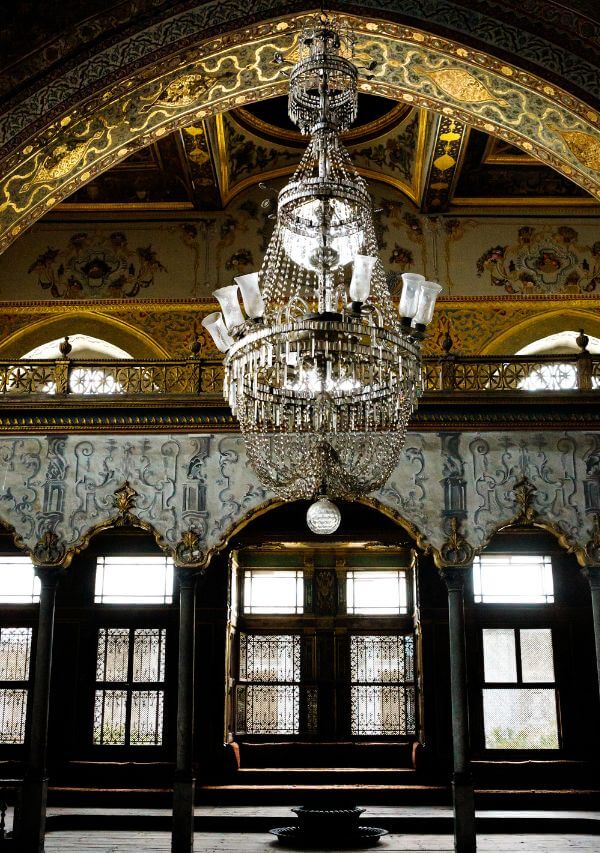
To access the Harem, an additional ticket is required apart from the main entrance ticket to Topkapi Palace. It is recommended to join a guided tour to gain a more comprehensive understanding of the history and stories related to the Harem.
It is important to note that availability and access to certain areas of Topkapi Palace, including the Harem, may be subject to changes and regulations, so it is advisable to check the most up-to-date information before visiting the place.
The Harem of Topkapi Palace is one of the palace’s most famous and mysterious sections. It was a crucial part of Ottoman life and symbolized power and splendor. Here is more information about the Harem:
What is the Harem?
The Harem was a separate part of Topkapi Palace that housed the private residences of the sultan’s family, including his wives, concubines, mothers, and children.
Additionally, eunuchs were also present here, responsible for the Harem’s security and internal functioning.
Why is It Called the “Harem”?
The word “Harem” is derived from the Arabic word “haram,” which means “forbidden” or “sacred.” The term describes a space reserved exclusively for women and the private life of the sultan’s family.
The Harem was private and out of reach for visitors and the general public.
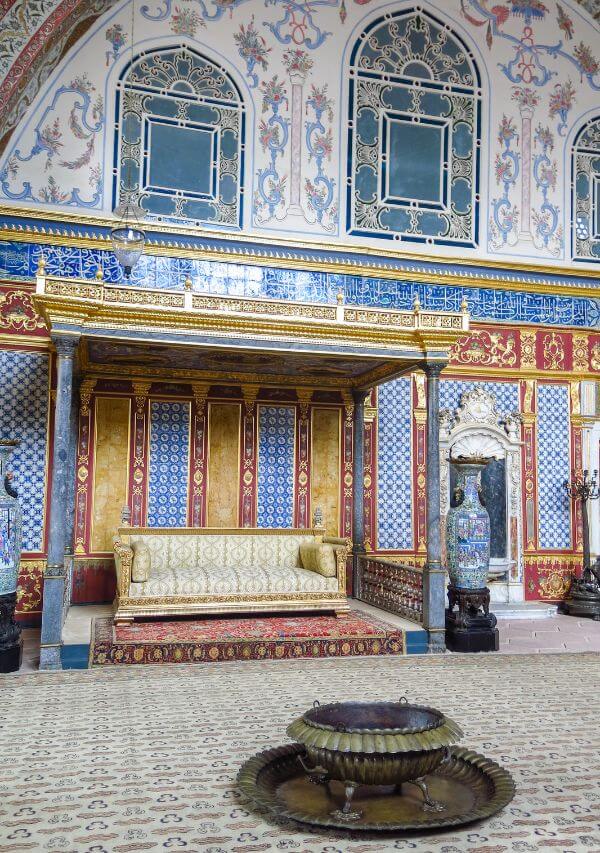
Function and Organization
The Harem served multiple functions within the Ottoman imperial system. Apart from being the residence of the royal women, it was also a center of power and politics.
The sultan’s wives and concubines were carefully selected to form political alliances and ensure the imperial lineage.
The Harem was organized in a strict hierarchy. The sultan’s mother, known as the “Valide Sultan,” had a prominent role and wielded significant influence. The principal wives, called “Kadın Efendi,” also held a high status.
The concubines, known as “Cariye,” were enslaved women or prisoners of war who could rise in the hierarchy through the favor of the sultan.
The Harem was also the place where the sultan’s children were educated and prepared for future leadership roles.
Architecture and Design
The Harem was composed of a complex of rooms, courtyards, gardens, and living quarters. The rooms were luxurious and richly decorated with tiles, plasterwork, and paintings. The inner courtyards provided a tranquil and private atmosphere for the women.
Access to the Harem was strictly controlled, and only authorized personnel, such as eunuchs, and selected special guests, were allowed entry. The main objective was to ensure the privacy and security of the women in the Harem.
The Harem of Topkapi Palace has become a popular tourist attraction today. Visitors can explore some of the rooms and learn about life in the Harem through exhibitions and specialized guides.
It is important to note that the information and practices related to the Harem have evolved over time and may vary depending on the historical source and specific era.
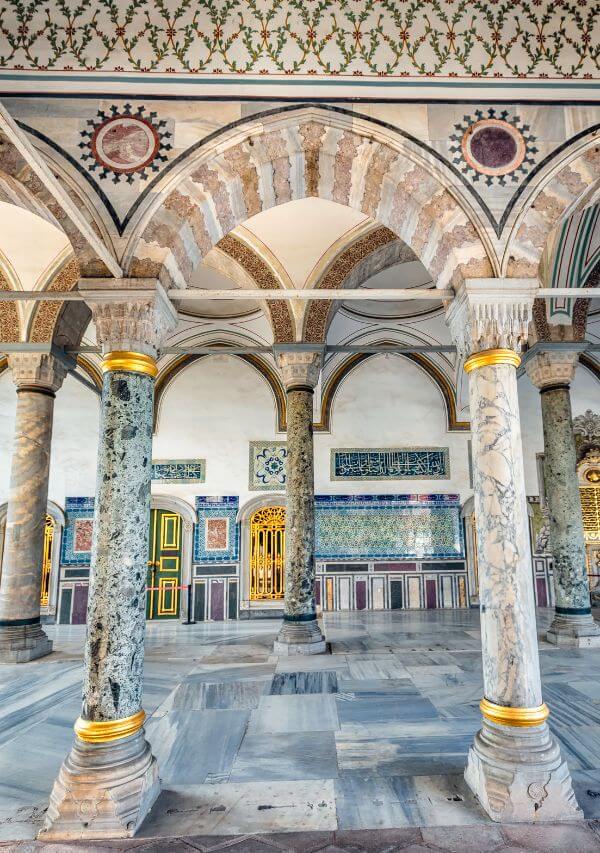
The Treasury of Topkapi Palace
One of the main attractions of Topkapi Palace is its impressive treasury. This treasury is composed of a wide variety of items, from jewelry and gold to diamonds and other gemstones.
Among the standout items in the treasury is the Spoonmaker’s Diamond. This 86-carat diamond is one of the world’s largest and is considered one of the most valuable jewels in the treasury.
In addition to the Spoonmaker’s Diamond, the treasury also features a large number of other jewelry and gold objects. Some of the standout items include a gold belt with diamonds, an emerald necklace, and a golden chalice with rubies and emeralds.
Most items in the treasury were created during the Ottoman period and used in ceremonies and important events. Many of these objects were gifted to the sultans by other leaders and dignitaries from other countries.
If you’re interested in seeing Topkapi Palace’s treasure, purchasing a separate ticket for the treasure section is recommended. This ticket will grant you access to the treasure section and allow you to see all the items up close.
The Spoonmaker’s Diamond
The Spoonmaker’s Diamond is one of the most valuable objects in the treasure of Topkapi Palace. It is a yellow diamond weighing 86 carats that was found in a mine in India.
According to legend, the diamond was found by a slave who hid it in his shoe and brought it to Constantinople.
To see the Spoonmaker’s Diamond, you’ll have to pay an additional fee of 15 TL and wait in line for a while, but it’s definitely worth it.
Remember that Topkapi Palace is a very popular tourist attraction and can be crowded during certain times of the year.
The best time to visit Topkapi Palace is to go early to avoid the queues and wearing comfortable shoes as you’ll have to walk a lot. Enjoy your visit to Topkapi Palace!
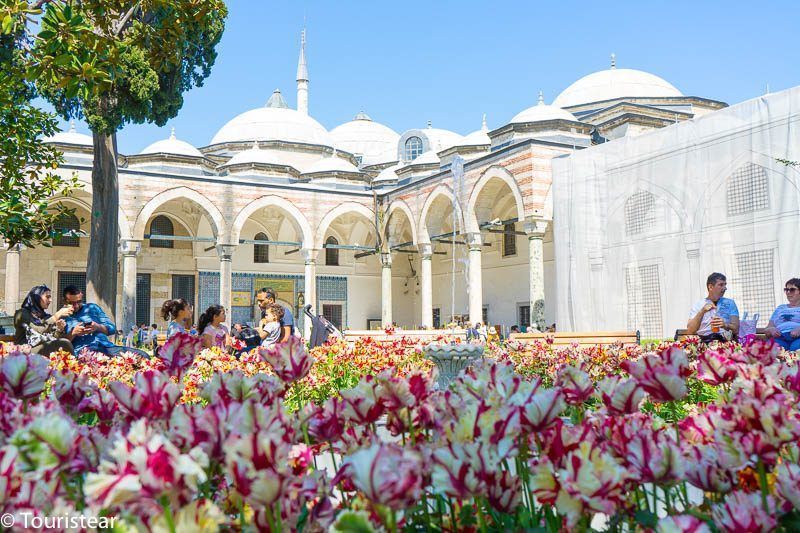
Curiosities of Topkapi Palace
Topkapi Palace is one of the most visited monuments in Istanbul and hides numerous curiosities and secrets that are worth knowing.
One of the most notable curiosities of Topkapi Palace is that it was the center of power of the Ottoman Empire for over 400 years.
Important government decisions were made here, ceremonies and funerals were held, and the most distinguished visitors of the empire’s golden age were received.
Topkapi Palace has numerous buildings and courtyards, and the labyrinth of corridors and rooms can be overwhelming for visitors. However, discovering its secrets is worth getting lost in its corners.
Among the most notable curiosities of Topkapi Palace are the kiosks, small pavilions scattered throughout the complex that serve as places for rest and contemplation.
It is also interesting to learn about the history of the Topkapi Dagger, one of the world’s most famous weapons, which is on display in the palace.
Topkapi Palace boasts an impressive collection of manuscripts, armor, and thrones that showcase the wealth and power of the Ottoman Empire. It is also known for its breathtaking tiles and mosaics, which adorn the walls and ceilings of numerous rooms and courtyards.
Don’t forget the importance of travel insurance. Protect yourself against unexpected events and ensure a worry-free trip. Get a 5% discount on travel insurance from HeyMondo and explore the palace’s treasures with peace of mind. Enjoy your journey with confidence!
Is Topkapi Palace Worth It?
When you visit Topkapi Palace, you cannot miss the Ceremony Square, a spacious outdoor area used for ceremonies and military parades. From here, you can enjoy stunning views of the Bosphorus and the ancient city of Constantinople.
*Note: Some of the photos are from Canva, as I visited during the peak season and there were people everywhere. Mine are from the 1st to the 3rd, the sixth, and the last two. In addition to showing you how fabulous the buildings are, I want you to see the reality, which is why there are photos like the third one, crowded with people.
Plan Your Trip to Istanbul
- What to See in Istanbul in 4 Days
- Itinerary To Visit Turkey in 9 Days
- Book plane tickets to Turkey!
- What To See in Cappadocia in 3 Days
- How to Get to Cappadocia from Istanbul
Last Updated on 6 September, 2023 by Veronica
Disclosure: Some of the links on this post are affiliate links, meaning at no additional cost to you, I may earn a small commission if you click through and make a purchase.
Author: Veronica
Vero, a seasoned traveler, has explored 25 countries and lived in five, gaining a rich perspective and fostering an infectious passion for travel. With a heart full of wanderlust, Vero uncovers the world’s hidden gems and shares insights, tips, and planning advice to inspire and assist fellow adventurers. Join Vero and let the shared passion for travel create unforgettable memories.
